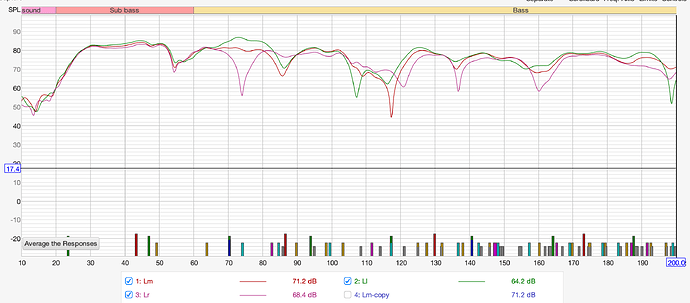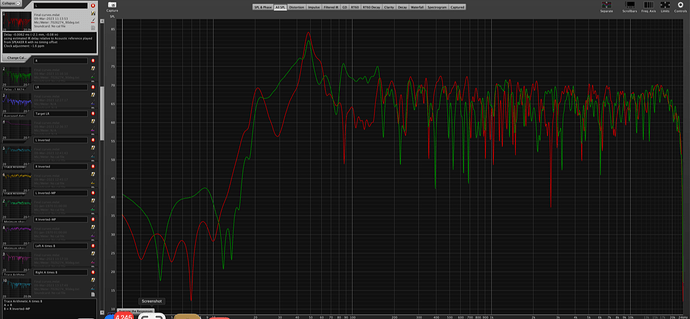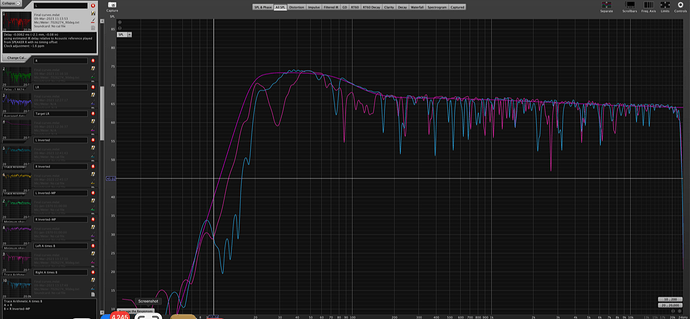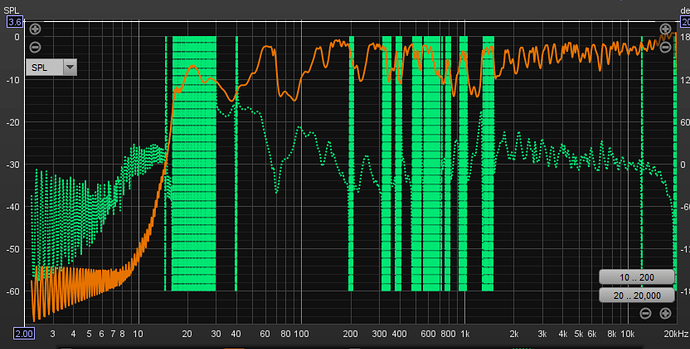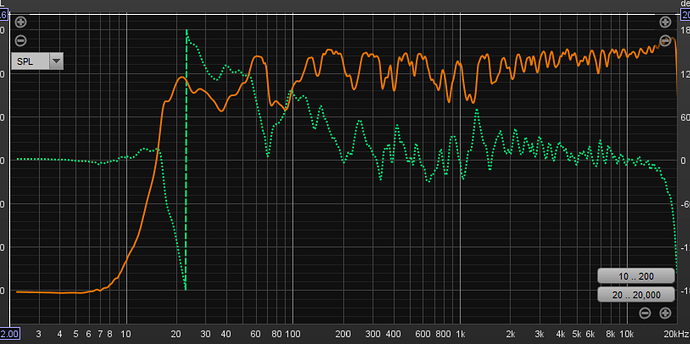Just leave everything as is, don’t use any SPL offsets. Your left and right responses should be around the same level with each other. Don’t worry if they are both a bit below or above the target. It will not have any audible effect.
Serkan, I have an absolutely normal ceiling, even without any differences in height. My ceiling is a concrete slab that is then plastered and painted with acrylic paint.
I don’t understand how my left and right speakers have opposite phase characteristics in the range of 70-90 Hz, if my Klipsch RP-8000F II is brand new, bought from an authorized dealer on 02/14/2023?
No, no room treatments and no DSP. Straight up 2 way floor standing old-school monkey coffins with front ported bass. The room is rectangular (4m x 7.3m) and setup is close to symmetrical BUT a) I am listing across short wall, not long wall and b) there are large openings on the ends of each long wall (so 4 in total, to the left/right of speakers, and to the left/right of listening position).
I think that maybe it’s the opposite unfortunately - there are so many room modes going on I can’t separate them. It’s also a very lively room. The evidence suggesting a problem is that is my low frequency responses are VERY different just 25 cm from each other eg. here is Ll vs Lm vs Lr … (25cm - 0 - 25cm) … eg. I really don’t understand how I can get this peak at 75Hz for Ll and Lm but I move the mic 25 cm to the right and it turns into a big dip/null!! ugh. I have similar inconsistency between Rl - Rm - Rr. Something must be really wrong with my room ha ![]()
Can you share your initial measurements?
Well, it may be different reflection coefficients on the side walls. Every system has some of that but yours are lasting quite a bit in the lower bass area.
Sure things. Your insight is MUCH appreciated.
https://drive.google.com/file/d/1vKsriQMZKXAxDnNnZF7NXQQFbqtJV9k0/view?usp=sharing
What are the speakers?
Graham Audio LS5/9f. But fyi I have noticed this same thing with Spendor D7.2’s as well - I don’t have sweeps on hand but when I did RTA measurements I would see much different bass response when moving from left ear to right ear sides of the moving mic process.
I just needed it for the XO phase correction
https://drive.google.com/file/d/15Ih_BuOyA2euQkNKhhUSmzjZhXmwsC4d/view?usp=sharing
You will find in the zip Filter1.wav, Filter2.wav, the .mdat and rePhase settings for your crossover. Both Filter 1 and Filter 2 are 48kHz stereo convolution files ready to be uploaded to Roon engine (you don’t need to zip them if it’s only one file). You should hear a major improvement with Filter 1. Filter 2 adds some phase correction on top of Filter 1. I couldn’t spend much time on it but it should sharpen the phantom image and rise the sound stage.
Wow I wasn’t expecting that. Thank you so much. I will go through all the steps in the mdat file and try this out asap!
[edit - I normally use HQPlayer, which doesn’t support stereo convolution files so will generate mono files from the .mdat]
FL1 and FR1 (trimmed versions) are mono files for the first filter, FL2 & FR2 are mono files for the second. Export them at 48kHz only and don’t tick normalize or IR Windows. Normalizing will double the clipping headroom required which should already be around -6, -7dB.
The operations in REW will not make much sense to you I guess but don’t worry about that before you try the filters.
On a second look this morning, I figured I have got your speakers’ XO phase correction wrong. It’s really not that straightforward to find the exact one. Anyway, I’ve corrected it and re-did your convolution filters accordingly (all mono filters this time). Everything including rePhase file with the new XO and the new mdat is in the zip below:
https://drive.google.com/file/d/1sBc6VuKQvtZoZg1EAP-vczozbtqyz7cK/view?usp=sharing
Hi Serkan,
This is my first foray into convolution. I’ve had a Umik-1 for about four years and have dabbled with REW. Thanks to your excellent tutorial, I’ve managed to produce a set of measurements and convolution files. The one thing that confused me was that when I overlaid the target curve over my traces, none of the peaks appeared above the TC. I forget how I did it but I moved the TC down but did it by eye rather than really knowing what I was doing.
I hear less bass nodes in my room since using the filters in roon but overall the sound hasn’t improved that much. Do you think the initial curves and the filter results look OK?
This is my first time and I’ve bound to have made some mistakes, but your instructional video was easy to follow. Thank you for your work! ![]()
After listening for a day, it’s obvious now that the convolution filters have had much more effect than I thought. I’m hearing a larger soundstage, better definition in voices but with less
listening fatigue. Voices and instruments seem to have more air around them and because of the reduced bass nodes, detail in the lower frequencies is not masked giving the sound a more listen through (transparent?) quality.
I’ve very impressed with the improvements, especially for a first attempt. It’s amazing what we can achieve with some excellent free software and expert guidance.
Happy to hear that you liked the results. Which version of REW are you using? REW has changed “A over B” trace artihmetic SPL levels lately. The results shoudln’t be effetced but I didn’t have time to test the old method with it yet.
And sorry I only just saw that message ![]()
Hi,
Thanks for responding. I’m using the very latest Mac version which I updated to last week.
Do those measurements and results look OK to you?
They certainly sound it! When I’m sure I’ve got this stage right, I’ll be following your other tutorials re: phase etc.
Thanks in advance.
Yes filters seem to be working as intended. Depending on what you didn’t like in the calibrated sound, you can make adjustments. If you use 25% regularization for instance instead of 8% during division, there’ll be no boost to any dip, just peak cutting which may remove some of the flatness. There are many other ways to improve, this tutorial just opens up the way ![]()
First - Thank you so much for putting all this together. Very cool stuff and I have been having a lot of fun comparing Dirac vs REW.
However, I have found that if I do not run an IR Windows w/ frequency dependent windows of 35 on the end MP result, Roon will start looping (echo) the music every few secs. I also noticed that my final MP (min phase) will have this for a phase response:
After the IR window w/ frequency dependent window of 35:
Any idea why this happens?
